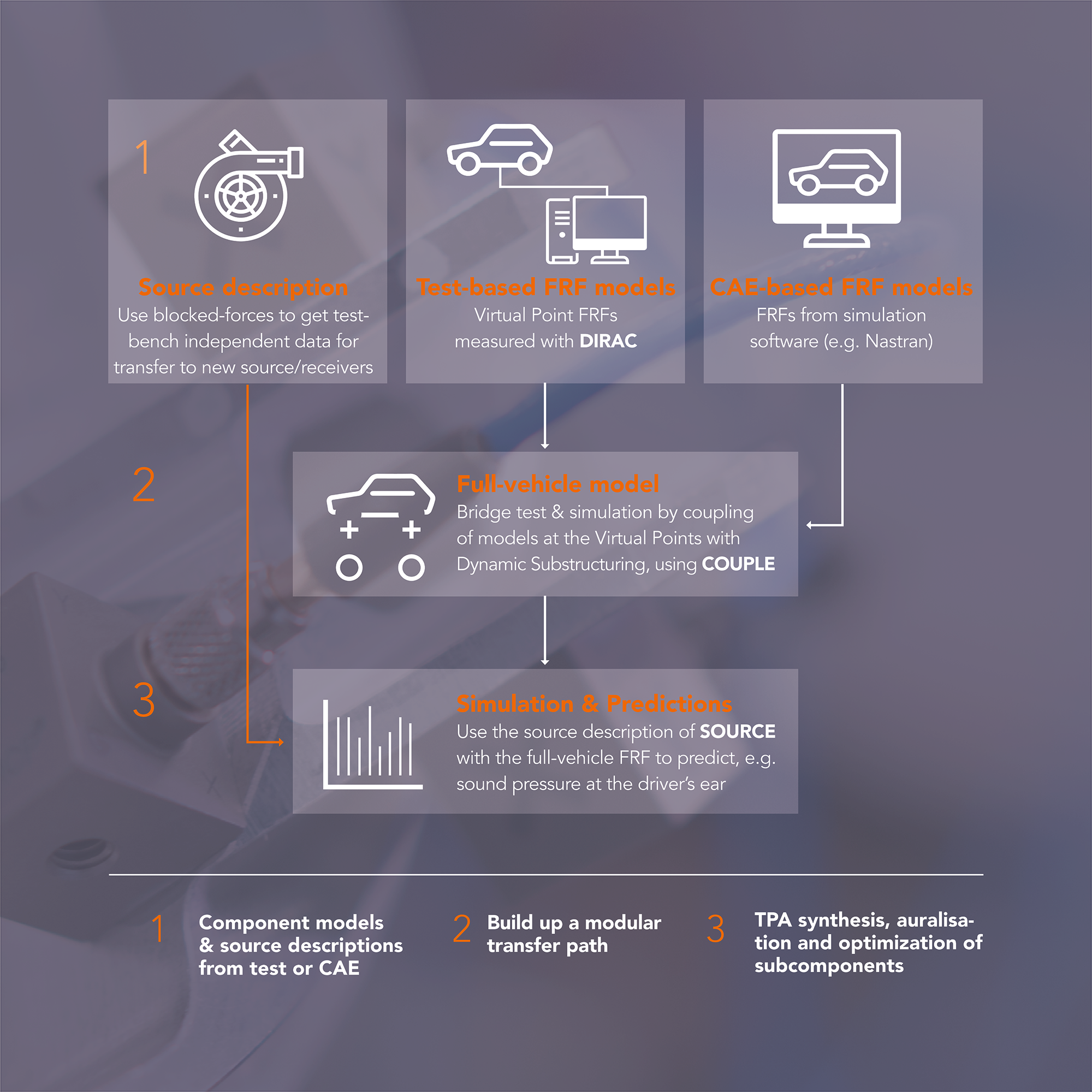Developing COUPLE: Bridging test & simulation
11 October 2021
The first dedicated dynamic substructuring tool for test-based modeling
We see that more industries are taking on the modular approach in the design of their products, which means that their NVH departments must follow suit. This is a challenge as it will more than often change their way of working. Fortunately, the modeling methods they require are already in place in the form of Dynamic Substructuring! Dynamic Substructuring is a perspective in NVH modeling that enables multidisciplinary teams to work together on a global modular level without sacrificing their abilities to focus on the details of each module locally. It should be of no surprise that it is therefore gaining traction in the NVH community.
It is a perspective that VIBES embraces in its test-based dynamic models. As part of our ambition to realize such a way of working we are constantly filling the gaps in software so that engineers working in NVH and vibrational modeling departments may do the same. In that endeavor we have successfully launched DIRAC, a heavyweight testing package optimized for component modeling and system identification; and SOURCE, the lean source characterization and Transfer Path analysis Application. Now that we can characterize vibrational sources and create high quality test-based component models, it is time to go full circle and create the first dedicated dynamic substructuring tool for test-based modeling.
In September 2020, VIBES teamed up with the TU Munich and BMW to define a joint R&D project for European funding under the Eurostars program with the intention to develop software which accurately predicts the sound & vibration behavior of new (electric) vehicles. Out of the nearly 400 European applications, our proposal was ranked the most innovative in the Netherlands and 2nd in Europe! That’s where we set out to make our third propriety software: COUPLE, a complete substructuring studio application that applies the newest techniques such that, together with DIRAC and SOURCE, it will offer users a complete test-based modeling workflow.
We learned from DIRAC and SOURCE the value of alleviating engineers from the administrative duties inherent to test-based modeling. To that end, COUPLE will collect all your test-based models so that you will be able to use them as intended: multiple times and in multiple variations. In this way, you can create a library of test-based models in an organized manner. With such an amount of data to your disposal, you may then choose to combine these test-based component models with numerical simulations to construct your systems in a modular fashion using substructuring techniques. You will be able to analyze and choose between different variants quickly and intuitively facilitating your role as a true dynamic architect.
Where we are now
Currently a year has passed in the Eurostars project and VIBES is rounding off the first viable product. With this first version of COUPLE, we can now combine component models in a substructured fashion in a dedicated software product. In order to test and validate the application, we will need component model data as well as validation data.
Together with our friends at BMW, we will perform component measurements on the BMW i4, the first fully electric Gran Coupé from BMW. Specifically, we will model the vibrational characteristics of the 5th gen electric drive-train in the i4 through various configurations. These measurements will replace a previous measurement campaign that we did on the BMW ix3 as our go-to software testing dataset. The ix3 measurements were coincidentally the unofficial testing case for DIRAC so it seems only fitting to use BMW measurements to test COUPLE; some traditions are best kept alive! Of course, we have learned a lot since then and have improved the capabilities of all our software products, so we expect to further improve the quality of the measurements. Aside from being an excellent dataset in their own right, it will also showcase COUPLE’s variable design possibilities and analysis tools; not only for us and the people at BMW and TU Munich, but also for all those interested!
What’s next
First of all: stay tuned for more insights on the showcase of COUPLE through our case page. The Eurostars project is still running and we will steam on, adding functionality and constantly improving COUPLE’s user interface. Throughout the duration of the project, VIBES will finalize the first viable product, TUM will research new methodologies and BMW will use the i4 measurements to meticulously test each version providing engineering feedback. Of course, our work on COUPLE will continue after that as we continuously update all our software products, to provide engineers worldwide the best possible workflow for modular engineering.

